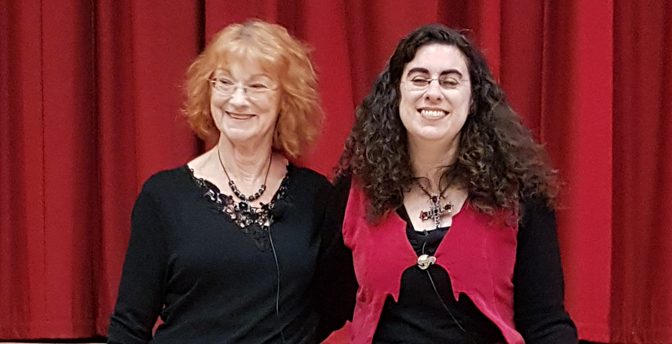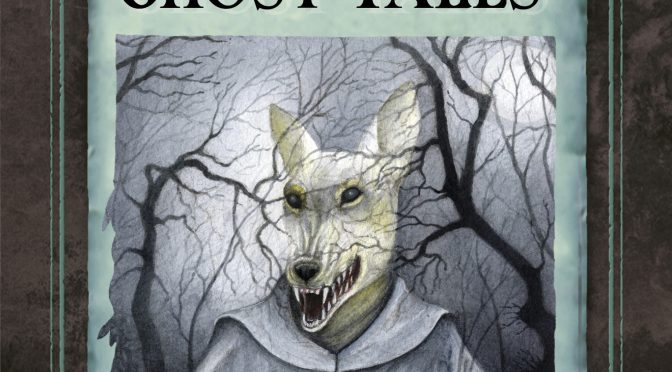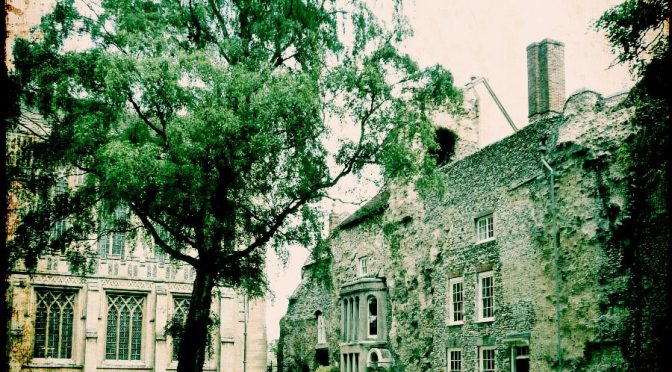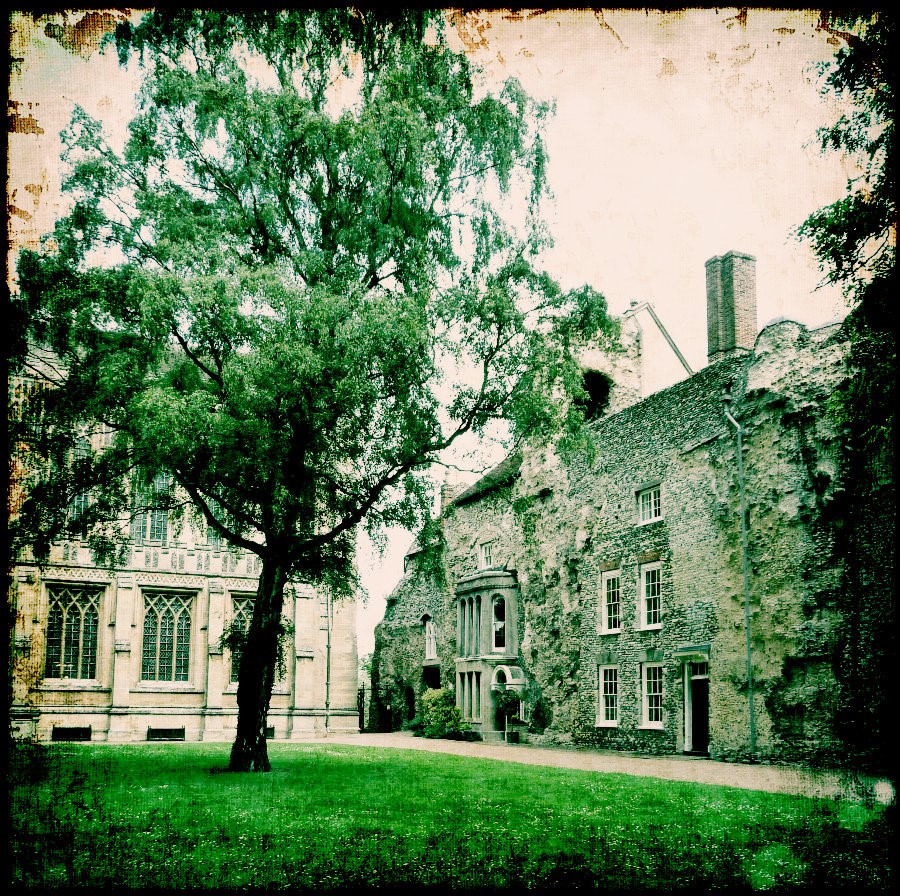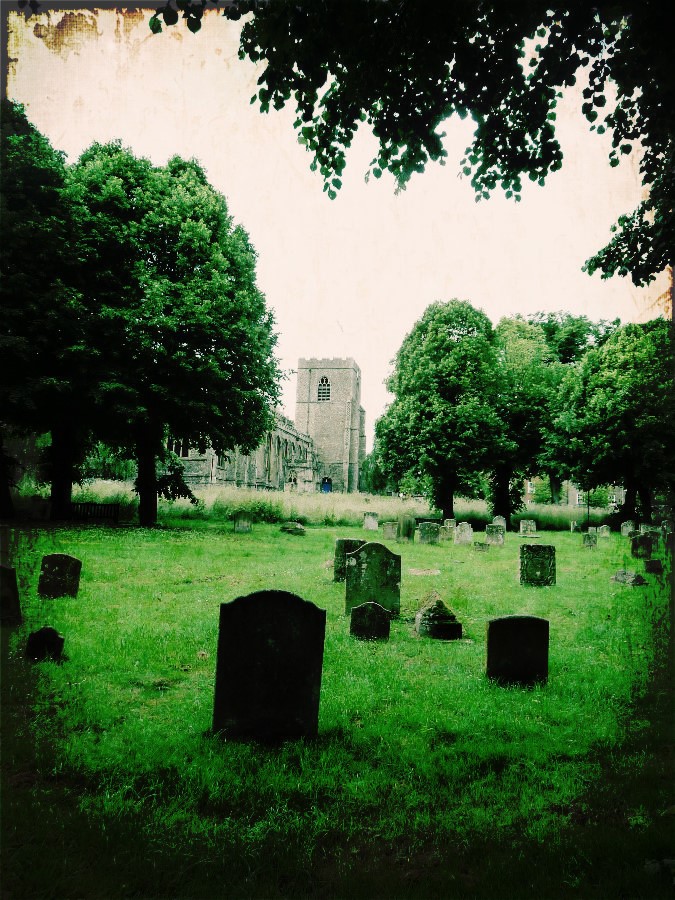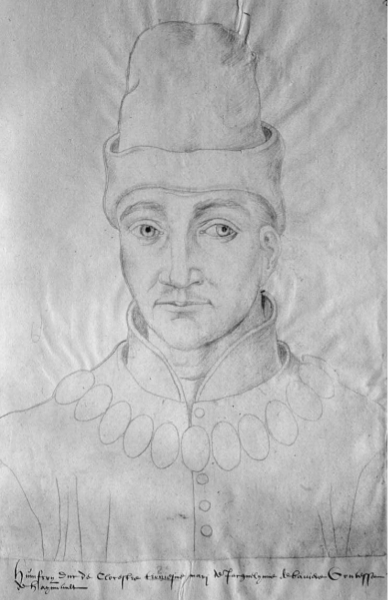It’s out! Cherry and I officially launched Suffolk Ghost Tales with a bang on Saturday 16 December in Wenhaston Village Hall – and it was amazing! It felt as if half of East Suffolk came to our book launch party to hear our songs and stories, wish us well, drink fizz and buy the book. The baby’s head has definitely been wetted, and the books are out there now, in the wild…
Here they are before the first sale – alongside a few of my other books! All of the Ghost Tales you see here sold!
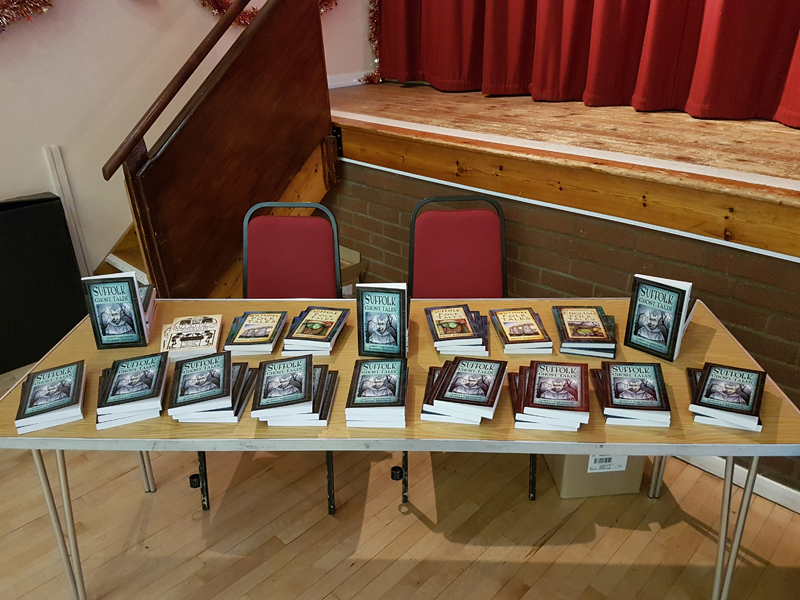
Cherry and I planned a whole performance for the event – storytellers and singers don’t like to do things by halves! I told three stories from the book, and Cherry sang three songs associated with the tales. The first of the stories told was especially for a very special Wenhaston lady, Heather Phillips, to whom the book was dedicated. Heather celebrated her 90th birthday this year, and also published her mother’s memoirs in October also at the village hall. When I was researching Suffolk Folk Tales back in 2012, Heather gave us some silly Suffolk stories from the Saints, which went in the book, but also shared some more spooky tales, which I couldn’t fit in. But they were in our minds when we started on the ghost tales. This time we did include them – and one of the tales tells the story of Heather’s great-grandmother … and father. For all her tales and for her unceasing support and interest – Heather even baked a raft of sausage rolls and Suffolk rusks for the event! – we were delighted to present her with a copy of the book and reveal our dedication:
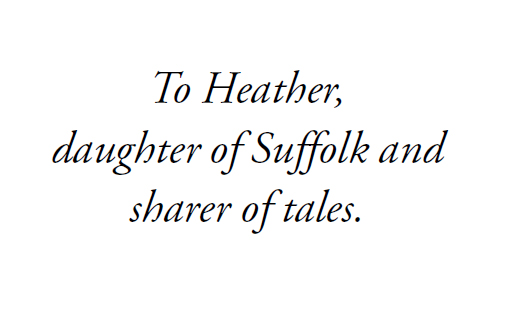
We’re planning a blog about Heather shortly, so watch this space!
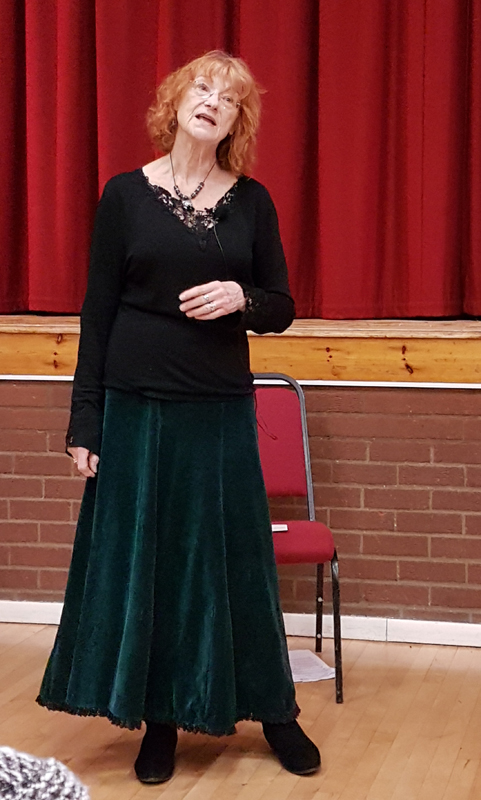
Cherry then sang the song Ranter’s Wharf by John Conolly in homage to the story ‘The Constant Maid’ – this was her first public performance in a long time, and she was perfect! I got quite emotional watching her, as I realised that this was the first time that we had ever performed together – not even when she enrolled me in the Young HADS to be the youngest child in The Admirable Crichton, my first acting performance (first line on stage: ‘What are bunions, Nanny?’), as she did the props, not the acting! I’ll be sharing her songs in future blogs…
I then told another tale of love and loss, ‘Kate’s Parlour’, an eerie place on Jay’s Hill near Sotterley – you can see it here:
Next up was a collaboration – Cherry singing ‘The Cat Came Back’ and the true tale of the 1970s adventures of the mummified cat you can see to this day in The Mill Hotel, Sudbury… It came back…
We finished with Cherry singing ‘The Mistletoe Bough’ a typically Christmas song of … being shut in a ‘living tomb’. Ahem. It’s a story that is associated with lots stately homes in England – in Suffolk, it’s Kentwell Hall in Long Melford.
Then the queue formed and we were signing, signing, signing! Thank you everyone who made the event so special – it was a real community event, with Cherry’s friends and neighbours pulling together to help and make it wonderful for us and our audience.
Especially big thank yous go to the following:
Cherry would like to give a special thank you to Helen Rolfe, her music mentor, for the help with the singing.
Jill and Michael and Janice and Roger for all their help setting up- without whom…
David for his sterling work at the drinks stall!
Viv for being our official photographer – we can’t wait for the images!
Dave for everything along the way, but on the day help with drinks and taking the money…
And for baking the treats people had to eat, Heather for sausage rolls and Suffolk rusks, Felicity for onion tarts and Janice for caraway cake – we were told that everything was lovely, but sadly we didn’t get a chance to sample…

